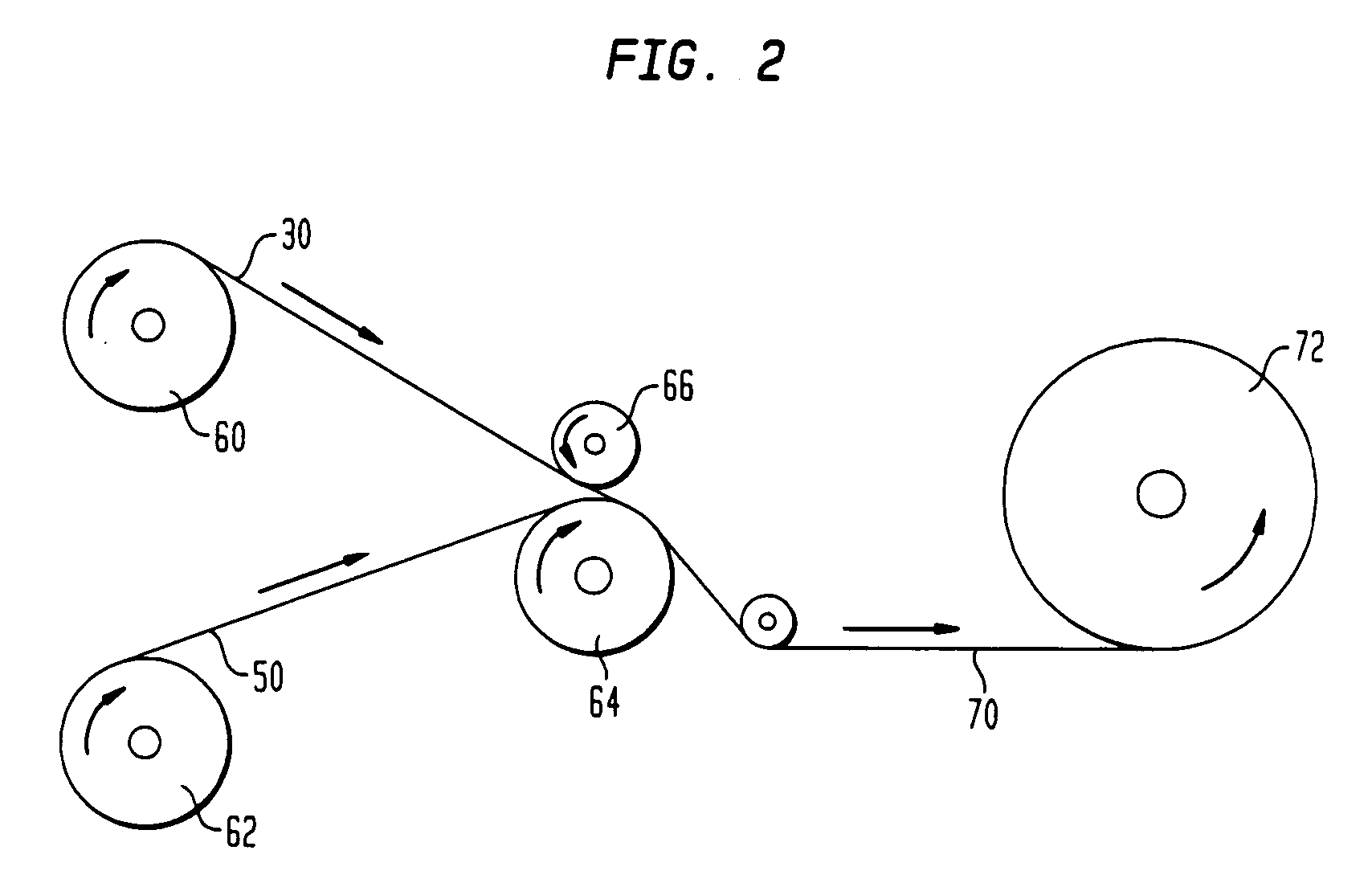Corrugated foam/film laminates for use as floor underlayment
- Summary
- Abstract
- Description
- Claims
- Application Information
AI Technical Summary
Benefits of technology
Problems solved by technology
Method used
Image
Examples
example 1
[0048] A low density polyethylene resin having a melt index of 2 g / 10 min and a density of 0.919 g / cm3 was combined in the feed zone of the primary extrusion chamber in a tandem extruder with 1.4 wt % of a nucleating agent masterbatch containing 50 wt % active talc and 50 wt % of the same low density polyethylene resin, and a 1.2 wt % of a permeation modifier mixture containing 66.7 wt % glycerol monostearate in 33.3 wt % monoethanolamide. The components were intricately fixed to form a homogenous polymer mixture. The mixture was then conveyed to the melt zone of the extruder and heated to a temperature of about 350° F. to form a molten mass. About 5.96 wt % (based on the weight of the resin) of an isobutane blowing agent was injected into the molten mass using a metering and pumping unit, and mixing continued until a homogenous blowing agent / polymer mixture was formed. This mixture was then conveyed to the secondary extrusion chamber in which it was cooled to a temperature of about...
example 2
[0050] A low density polyethylene resin having a melt index of 1.5 g / 10 min and a density of about 0.924 g / cm3 was combined in the feed zone of the primary extrusion chamber in a tandem extruder with 0.1 wt % of the same nucleating masterbatch used for Example 1, and 1.2 wt % of a permeation modifier mixture containing 66.7 wt % glycerol monostearate in 33.3 wt % monoethanolamide. The components were intricately mixed to form a homogenous polymer mixture. The mixture conveyed to the melt zone of the extruder and heated to a temperature of about 360° F. to form a molten mass. About 13.0 wt % (based on the weight of the resin) of a propane blowing agent was injected into the molten mass using a metering and pumping unit. Mixing of the ingredients continued until a homogenous blowing agent / polymer mixture was formed. This mixture was then conveyed to the secondary extrusion chamber of the extruder in which it was cooled to a temperature of about 234.5° F. Following stabilization, the m...
PUM
 Login to View More
Login to View More Abstract
Description
Claims
Application Information
 Login to View More
Login to View More - R&D
- Intellectual Property
- Life Sciences
- Materials
- Tech Scout
- Unparalleled Data Quality
- Higher Quality Content
- 60% Fewer Hallucinations
Browse by: Latest US Patents, China's latest patents, Technical Efficacy Thesaurus, Application Domain, Technology Topic, Popular Technical Reports.
© 2025 PatSnap. All rights reserved.Legal|Privacy policy|Modern Slavery Act Transparency Statement|Sitemap|About US| Contact US: help@patsnap.com



